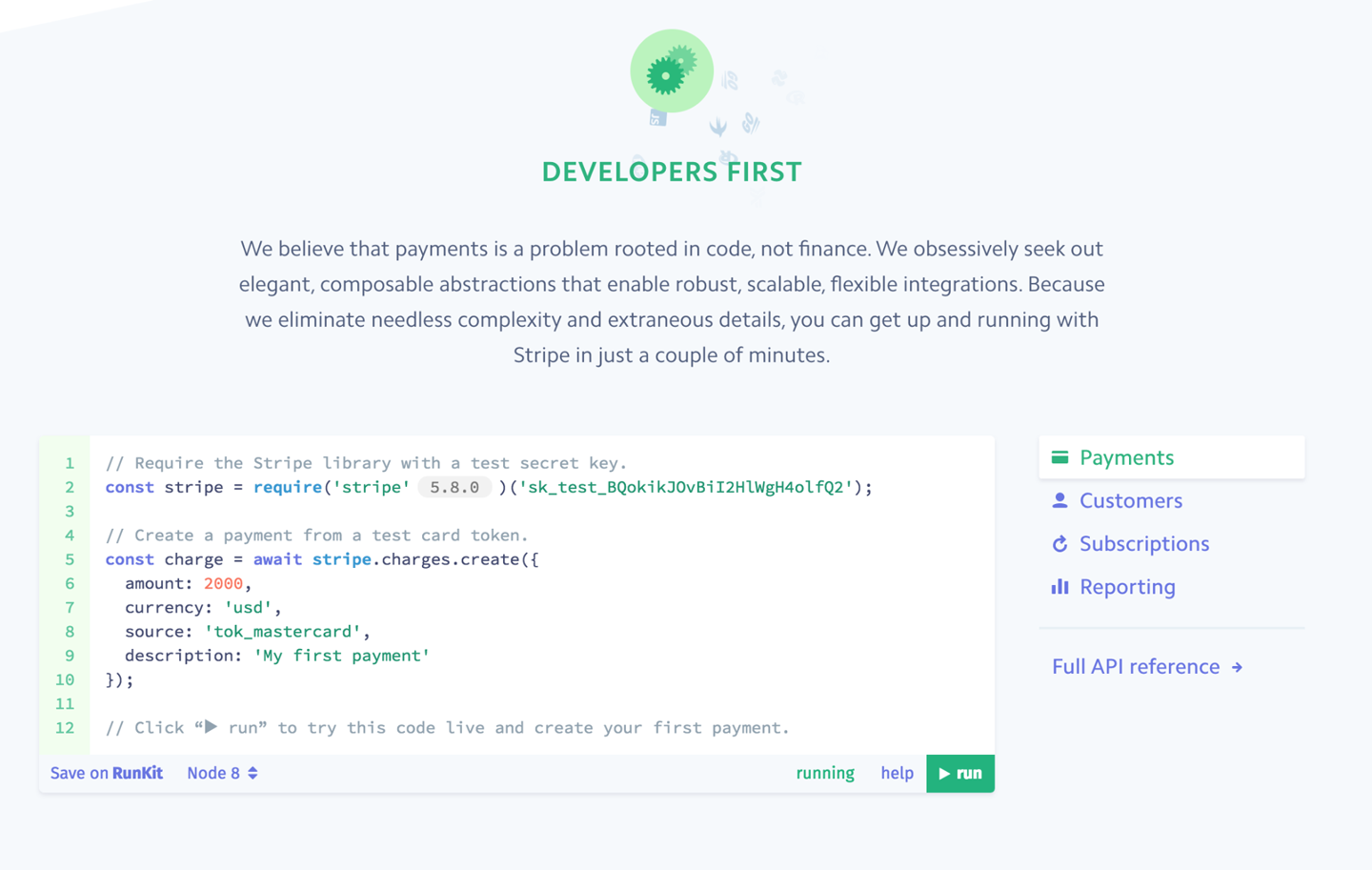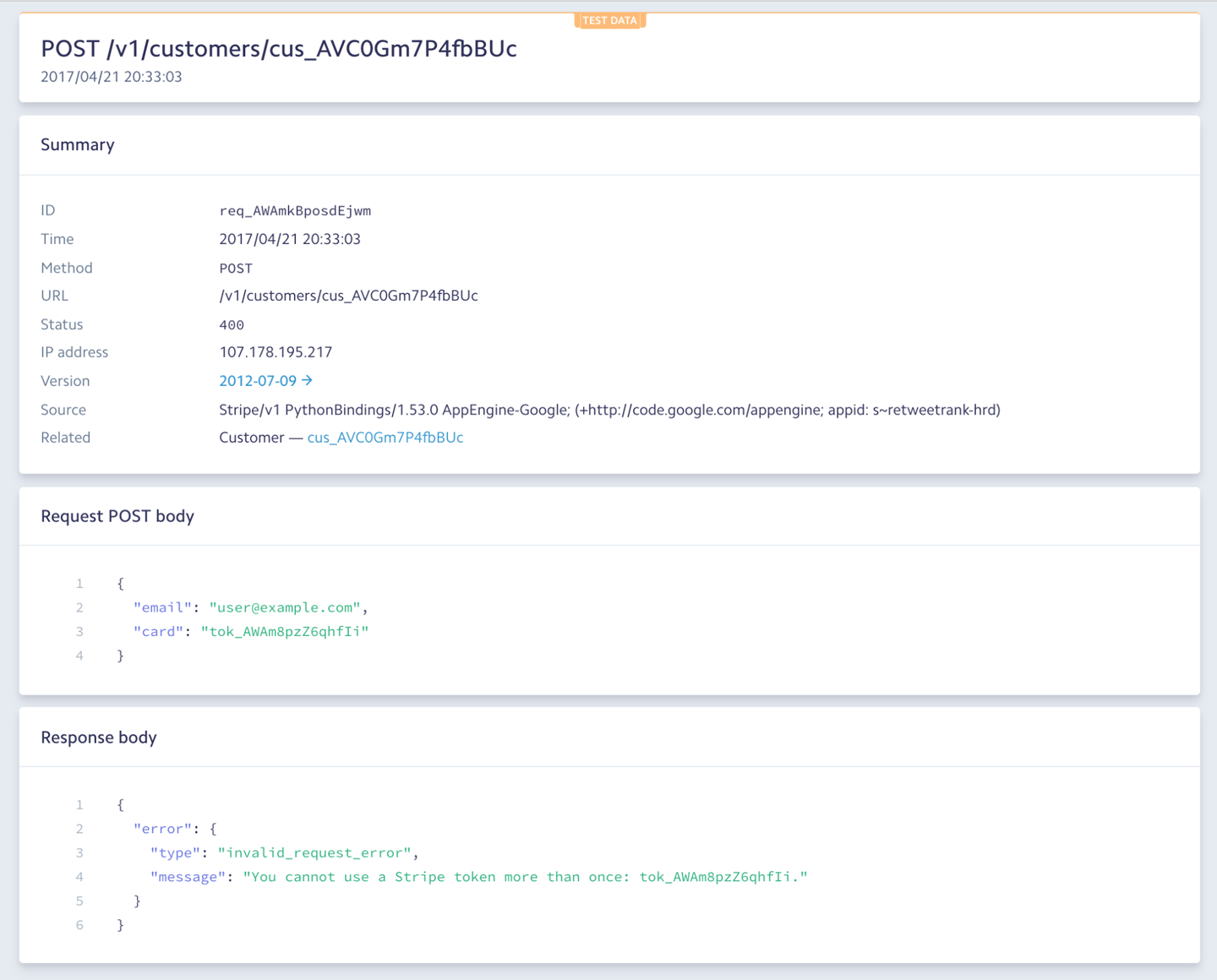Best design practices to get the most out of your API
Practical techniques to ensure developers can actually do the things you want them to do using your API.
 Fractal spokes (source: Publicdomainpictures.net)
Fractal spokes (source: Publicdomainpictures.net)
In the previous chapters, we gave an overview of various approaches for transmitting data via your web API. Now that you’re familiar with the landscape of transport and have an understanding of how to choose between various patterns and frameworks, we want to provide some tactical best practices to help your developers get the most out of your API.
Designing for Real-Life Use Cases
When designing an API, it’s best to make decisions that are grounded in specific, real-life use cases. Let’s dig into this idea a bit more. Think about the developers who are using your API. What tasks should they be able to complete with your API? What types of apps should developers be able to build? For some companies, this is as targeted as “developers should be able to charge customer credit cards.” For other companies, the answer can be more open-ended: “developers should be able to create a full suite of interactive consumer-quality applications.”
After you have your use cases defined, make sure that developers can actually do the things you want them to do using your API.
Quite often APIs are designed based on the internal architecture of the application, leaking details of the implementation. This leads to confusion for third-party developers and a bad developer experience. That’s why it’s so important to focus not on exposing on your company’s internal infrastructure but on the experience that an outside developer should have when interacting with your API. For a concrete example of how to define key use cases, see the section “Outline Key Use Cases.”
When you get started with a design, it’s easy to imagine many “what-ifs” before implementation and testing. Although these questions are useful during the brainstorming phase, they can lead a design astray by tempting you to try and solve too many problems at once. By picking a specific workflow or use case, you will be able to focus on one design and then test whether it works for your users.
Designing for a Great Developer Experience
Like we spend time thinking about the user experience delivered via a user interface, it’s important to think about the developer experience delivered via an API. Developers have a low bar for abandoning APIs, so bad experiences result in attrition. By the same token, usability is the bare minimum for keeping a developer using your API. Good experiences get love from developers: they will in turn, become the most creative innovators using your API as well as evangelists for your API.
Make It Fast and Easy to Get Started
It’s important for developers to be able to understand your API and to get up and running quickly. Developers may be using your API to avoid having to build out a secondary product suite to support their main product. Don’t make them regret that decision with an API that’s opaque and difficult to use.
Documentation can go a long way toward helping developers get started. In addition to documents that outline the specifications of an API, it can be helpful to have tutorials or Getting Started guides. A tutorial is an interactive interface to teach developers about your API. You might have developers answer questions or fill in “code” in an input area. A guide is a more contextual document than a specification. It provides information for developers at a certain point in time—typically when getting started, but sometimes when updating or converting from one version or feature to another.
In some cases, you can supplement the ease of use by providing interactive documentation online, where developers have a sandbox to test out your API. Oftentimes, developers can use these interfaces to test code and preview results without having to implement authentication.

In addition to interactive documentation, tools such as software development kits (SDKs) can go a long way toward helping developers use your API. These code packages are designed to help developers get up and running quickly with their projects by simplifying some of the transactional layers and setup of an application.
For an ideal experience, developers should be able to try out your APIs without logging in or signing up. If you cannot avoid that, you should provide a simple signup or application creation flow that captures the minimum required information. If your API is protected by OAuth, you should provide a way for developers to generate access tokens in the UI. Implementing OAuth is cumbersome for developers, and in the absence of easy ways to generate these tokens, you will see a significant drop-off rate at this point.
Work Toward Consistency
You want your API to be intuitively consistent. That should be reflected in your endpoint names, input parameters, and output responses. Developers should be able to guess parts of your API even without reading the documentation. Unless you are making a significant version bump or large release, it’s best to work toward consistency when designing new aspects of an existing API.
For example, you might have previously named a group of resources “users” and named your API endpoints accordingly, but you now realize that it makes more sense to call them “members.” It can be very tempting to work toward the “correctness” of the new world rather than focus on consistency with the old. But if the objects are the same, it could be very confusing to developers to sometimes refer to them as “users” and other times as “members” in URI components, request parameters, and elsewhere. For the majority of incremental changes, consistency with the existing design patterns will work best for your users.
As another example, if in some places you have a response field called user and sometimes its type is an integer ID but sometimes its type is an object, each and every developer receiving those two response payloads needs to check whether user is an int ID or an object. This logic leads to code bloat in developers’ code bases, which is a suboptimal experience.
This can show up in your own code as well. If you have SDKs that you’re maintaining, you will need to add more and more logic to handle these inconsistencies and to make a seamless interface for developers. You might as well do this at the API level by maintaining consistency instead of introducing new names for the same things.
Consistency generally means that there are a number of patterns and conventions repeated throughout your API, in such a way that developers can begin to predict how to use your API without seeing the documentation. That could include anything from data access patterns to error handling to naming. The reason consistency is important is that it reduces the cognitive load on developers who are trying to figure out your API. Consistency helps your existing developers in adapting new features by reducing forks in their code, and it helps new developers hit the ground running with everything you’ve built on your API. In contrast, with less consistency, different developers will need to reimplement the same logic over and over again.
Make Troubleshooting Easy
Another best practice for designing APIs is making troubleshooting easy for developers. This can be done through returning meaningful errors as well as by building tooling.
Meaningful errors
What’s in an error? An error can occur in many places along your code path, from an authorization error during an API request, to a business logic error when a particular entity doesn’t exist, to a lower-level database connection error. When designing an API, it is helpful to make troubleshooting as easy as possible by systematically organizing and categorizing errors and how they are returned. Incorrect or unclear errors are frustrating and can negatively affect adoption of your APIs. Developers can get stuck and just give up.
Meaningful errors are easy to understand, unambiguous, and actionable. They help developers to understand the problem and to address it. Providing these errors with details leads to a better developer experience. Error codes that are machine-readable strings allow developers to programmatically handle errors in their code bases.
In addition to these strings, it is useful to add longer-form errors, either in the documentation or somewhere else in the payload. These are sometimes referred to as human-readable errors. Even better, personalize these errors per developer. For instance, with the Stripe API, when you use a test key in your live mode, it returns an error such as:
No such token tok_test_60neARX2. A similar object exists in test mode, but a live mode key was used to make this request.
| Situation | Recommended | Not recommended |
|---|---|---|
| Authentication failed because token is revoked | token_revoked |
invalid_auth |
| Value passed for name exceeded max length | name_too_long |
invalid_name |
| Credit card has expired | expired_card |
invalid_card |
| Cannot refund because a charge has already been refunded | charge_already_refunded |
cannot_refund |
To begin designing your system of errors, you might map out your backend architecture along the code path of an API request. The goal of this is not to expose your backend architecture but to categorize the errors that happen and to identify which ones to expose to developers. From the moment an API request is made, what are the critical actions that are taken to fulfill the request? Map out the various high-level categories of errors that occur during the course of an API request, from the beginning of the request to any service boundaries within your architecture.
| Error category | Examples |
|---|---|
| System-level error |
Database connection issue Backend service connection issue Fatal error |
| Business logic error |
Rate-limited Request fulfilled, but no results were found Business-related reason to deny access to information |
| API request formatting error |
Required request parameters are missing Combined request parameters are invalid together |
| Authorization error |
OAuth credentials are invalid for request Token has expired |
After grouping your error categories throughout your code path, think about what level of communication is meaningful for these errors. Some options include HTTP status codes and headers, as well as machine-readable “codes” or more verbose human-readable error messages returned in the response payload. Keep in mind that you’ll want to return an error response in a format consistent with your non-error responses. For example, if you return a JSON response on a successful request, you should ensure that the error is returned in the same format.
You might also want a mechanism to bubble up errors from a service boundary to a consistent format from your API output. For example, a service you depend on might have a variety of connection errors. You would let the developer know that something went wrong and that they should try again.
In most cases, you want to be as specific as possible to help your developers take the correct next course of action. Other times, however, you might want to occlude the original issue by returning something more generic. This might be for security reasons. For example, you probably don’t want to bubble up your database errors to the outside world and reveal too much information about your database connections.
| Error category | HTTP status | HTTP headers | Error code (machine-readable) | Error message (human-readable) |
|---|---|---|---|---|
| System-level error | 500 | -- |
-- |
— |
| Business logic error | 429 | Retry-After |
rate_limit_exceeded |
“You have been rate-limited. See Retry-After and try again.” |
| API request formatting error | 400 | -- |
missing_required_parameter |
“Your request was missing a {user} parameter.” |
| Auth error | 401 | -- |
invalid_request |
“Your ClientId is invalid.” |
As you begin to organize your errors, you might recognize patterns around which you can create some automatic messaging. For example, you might define the schema for your API to require specific parameters and to have a library that automatically checks for these at the beginning of the request. This same library could format the verbose error in the response payload.
You’ll want to create a way to document these errors publicly on the web. You can build this into your API description language or documentation mechanism. Think about the various layers of errors before writing the documents, because it can become complicated to describe multiple factors if there are many different types of errors. You might also want to consider using verbose response payloads to link to your public documentation. This is where you’ll give developers more information on the error they received as well as how to recover from it.
For even more structured and detailed recommendations on meaningful errors and problem details for HTTP APIs, see RFC 7807.
Build tooling
In addition to making troubleshooting easy for developers, you should make it easy for yourself by building internal and external tools.
Logging on HTTP statuses, errors and their frequencies, and other request metadata is valuable to have, for both internal and external use, when it comes to troubleshooting developer issues. There are many off-the-shelf logging solutions available. However, when implementing one, before you troubleshoot real-time traffic, be sure to respect customer privacy by redacting any personally identifiable information (PII).

Besides logging, when building an API, it’s helpful to create dashboards to help developers analyze aggregate metadata on API requests. For example, you could use an analytics platform to rank the most-used API endpoints, identify unused API parameters, triage common errors, and define success metrics.
Like for logging, many analytics platforms are available off the shelf. You can present the information in high-level dashboards that provide a visual display in a time-based manner. For example, you might want to show the number of errors per hour over the past week. Additionally, you might want to provide developers complete request logs with details about the original request, whether it succeeded or failed, and the response returned.
Make Your API Extensible
No matter how well you’ve designed your API, there will always be a need for change and growth as your product evolves and developer adoption increases. This means that you need to make your API extensible by creating a strategy for evolving it. This enables you as the API provider and your developer ecosystem to innovate. Additionally, it can provide a mechanism to deal with breaking changes. Let’s dive into the idea of extensibility and explore how to incorporate early feedback, versioning an API, and maintaining backward compatibility.
One aspect of extensibility is ensuring that you have created an opportunity for feedback with your top partners. You need a way to release certain features or fields and to give certain privileged developers the option to test these changes without releasing the changes to the public. Some would call this a “beta” or “early adopter” program. This feedback is extremely valuable in helping you decide whether your API has been designed in a way that achieves its goals. It gives you a chance to make changes before adoption has become prevalent and before significant changes require a lot of communication or operational overhead.
In some cases, you might want to version your API. Building a versioning system is easier if it’s baked into the design at an early stage. The longer you wait to implement versioning, the more complicated it becomes to execute. That’s because it becomes more and more difficult as time goes on to update your code base’s dependency patterns so that old versions maintain backward compatibility. The benefit of versioning is that it allows you to make breaking changes with new versions while maintaining backward compatibility for old versions. A breaking change is a change that, when made, would stop an existing app from continuing to function as it was functioning before using your APIs.
For companies and products that businesses rely on, maintaining backward-compatible versions is a difficult requirement. That’s especially true for apps that don’t experience a high rate of change. For a lot of enterprise software, there isn’t somebody dedicated to updating versions, and there’s no incentive for a company to invest in updating versions just because you’ve released a new one. Many internet-connected hardware products also use APIs, but hardware does not always have a mechanism to update its software. Plus, hardware can be around for a long time—think about how long you owned your last TV or router. For those reasons, it is sometimes imperative that you maintain backward compatibility with previous API versions.
That said, maintaining versions does have a cost. If you don’t have the capacity to support old versions for years, or if you anticipate very few changes to your API, by all means skip the versions and adopt an additive change strategy that also maintains backward compatibility in a single, stable version.
If you anticipate major breaking changes and updates at any time in your future, we strongly recommend setting up a versioning system. Even if it takes years to get to your first major version change, at least you’ve got the system ready to go. The overhead of creating a system of version management at the beginning is much lower than that of adding it in later, when it’s urgently needed.
Closing Thoughts
Meeting the needs of your users is at the core of solid API design. In this chapter, we covered a number of best practices to help you achieve a great developer experience.
As you build your API and developer ecosystem, you might discover more best practices specific to your company, your product, and your users.
